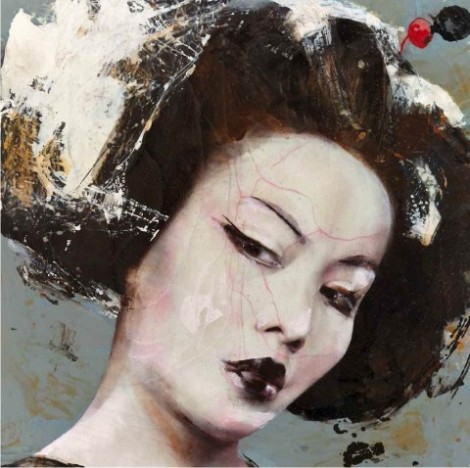Romani art is an overlooked treasure. Of course a culture so rich with symbolism, song, lore, and history would produce incredible art! So few people understand that “Gypsies” are a real ethnic group with cultures and sub-cultures, tribes/groups, spirituality, cuisine, music, dance, folk stories, dress, and on and on, so naturally we don’t hear a lot about the contemporary Romani arts scene. And as Roma are an underrepresented oppressed minority, the opportunities for Romani artists are few and many assimilated Roma are not safe to disclose their ethnicity. The Romani human rights crisis has been called “Europe’s shame” by Amnesty International and the UN. But it’s not just Europe.
“With a population of 10 to 12 million, the Roma are one of the largest and most disadvantaged minorities in Europe. Six million live in the EU.
Hundreds of thousands of Roma have been forced to live in informal settlements and camps, often without heating, water or sanitation; tens of thousands are forcibly evicted from their homes every year.
Thousands of Romani children are placed in segregated schools and receive a substandard education.
Roma are often denied access to jobs and quality health care. They are victims of racially motivated violence and are often left unprotected by the police and without access to justice.
This is not a coincidence. It is the result of widespread discrimination and racism…” http://www.amnesty.org/en/roma
But thank goodness that the Roma persevere and that Roma and Romani allies speak out against injustice. Art gives voice to the voiceless, to cultures and generations, to nations and people united through symbols, stories, history, union, and discord. In the class I teach at Florida State University, “Gypsies, Tramps, and Thieves: Writing Creatively about Romani Culture” we discuss Romani arts, culture, literature, rights, and representation. Right now we’re writing ekphrastic poetry on visual artwork by Romani artists, and I thought I’d post a list of some of the artists my students and I have been admiring. Here’s our class blog if you’re interested: http://gypsyrepresent.wordpress.com/.
Right now, I’m in love with the very successful, superfluously talented Romani painter Lita Cabellut. Keep an eye out for her work in the next issue of The Southeast Review.
“Born into poverty in Barcelona in 1961 and lived on the street before entering into an orphanage and being adopted at age 13 by a family that gave her the opportunity to develop her talents:“Actually, I learned to paint before to read and write.”
After studying the basics of drawing with a tutor, she had her first exhibit at age 17. At 19, she moved to study at the Rietveld Academy in Amsterdam, where she continues to live today.“I married very young, my first marriage was with the art”. http://thegypsychronicles.net/lita-cabellut/

Lita Cabellut, “Billie Holiday,” 2013, mixed media on canvas
Some links to Romani artists:
Here is a list of links to Romani artists’ names, works, and/or websites, as well as some other helpful resources:
http://www.romaniworld.com/artill.htm links to artworks by Romani artists
http://balval.pagesperso-orange.fr/ Marcel Hognon, Manouche sculptor
http://balval.pagesperso-orange.fr/ Mona, Manouche painter
http://www.romacult.org/en/catalog/2071/ a list of names of Romani artists that you can Google for images and information
http://www.rommuz.cz/en Museum of Roma Culture, Brno, Czech Republic
http://thegypsychronicles.net/romaartists-aspx/ Click on the artist that you want to learn more about
http://lolodiklo.blogspot.com/2011/02/art-by-romani-women-in-hungary.html Art by Romani women
http://lowegallery.com/artists/index-scrollbar.php?artist=lita-cabellut Lita Cabellut, Romani painter from Barcelona
http://artsedge.kennedy-center.org/educators/how-to/from-theory-to-practice/formal-visual-analysis.aspx Elements and Principles of art

Lita Cabellut, “Dried Tear,” 2013, mixed media on canvas












